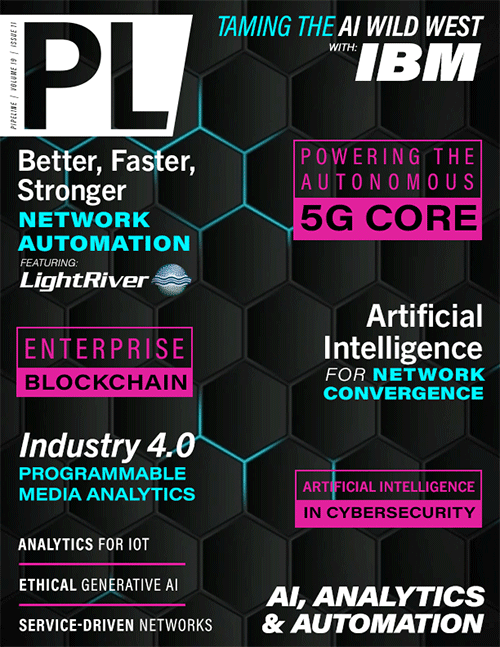AI for Converged Networks
By: Bart Giordano

Demand on enterprise IT has experienced the kind of growth that would put any hockey stick graph to shame. This is because enterprise business is getting more complex and to keep business humming, they count on their IT resources to leverage technology at every available opportunity. Today, we have arrived at the point where IT is expected to not just support but to drive business value from their enterprise networks.
It is also true that for any enterprise, however, IT is still a support function at its core. For a widget-making enterprise, IT helps the company make a widget better, faster, cheaper. IT will never become a core function of making the actual widget, even if its support enables those core functions to perform more efficiently. This is all well and good, except that enterprises are also forced to make IT “leaner” even as they rely more heavily on their support to continue making those widgets better, faster, cheaper.
For the record, lean IT does not mean weak IT. Lean IT just means IT is expected to become smarter, such that a smaller IT footprint is still able to handle more. At this point,
you may notice that the equation between IT resources and expectations doesn’t seem to add up—or if it does, it’s due to the intervention of an unseen influence not yet accounted for. This extra
element that brings balance is AI—artificial intelligence.
To understand how AI brings demands and resources into balance, consider walking a mile in the shoes of an IT staffer. For the sake of conversation, let’s limit our discussion to IT’s role in managing multiple access networks. Lastly, let’s put it into the context of an individual IT employee—a dedicated employee we’ll call “Person X.”
X’s job is to keep the enterprise’s wired and wireless networks running smoothly; it involves many different tasks to satisfy many different priorities, such as supporting the increasingly lofty expectations of end users, especially as new devices and applications proliferate to deliver value to line of business stakeholders. Person X, like most network administrators, uses numerous tools, consoles, and management systems to control and troubleshoot the network. There’s nothing wrong with this approach—as long as X can keep up with it all.
Now consider for a moment: if you are Person X, can you keep up? If you aren’t an IT professional, then ask your favorite IT person if they are generally able to keep up. You or your friend will likely conclude that, like X, the relentless demands are complicating a once-clear IT mission.
At the crack of dawn, X comes into the office and immediately starts reviewing the previous night’s network activities. X and their IT team spend the next three hours playing detective. Using multiple systems and multiple monitors, they review logs, warnings, and alarms to search for any service-affecting incidents and determine the health of the network.
Once incidents have been identified, X depends on one bright person—let’s call this individual Person Y, the star performer in their team—to prioritize these incidents based on importance and urgency. You probably see where this dependency is leading; the entire system relies on the presence, judgement, and dedication of Person Y. Suppose Y was hit by the proverbial bus or train? Or, more likely, what if Y decides to leave the team—or leave the enterprise entirely? What if Y just has a really bad day when the network is least able to sustain a lapse in judgment? Even without the bus and train scenarios, we’ve all seen the others play out—and when they do, the entire enterprise suffers.
With AI, this vulnerable link is removed from the chain and the process looks quite different. AI would not only identify incidents that are both important and urgent, but would also auto-prioritize and schedule every day with the same consistency. In other words, AI would display to X (and the team) which are the priority 1 incidents (P1), the priority 2 incidents (P2), and so on and so forth. Would you call this an IT game changer? It would be hard to describe it any other way.
Measuring the impact of AI is necessary to calculate its value to the IT organization. One key metric to evaluate is MTTI (mean time to identify an incident). With AI in the equation, MTTI goes down noticeably. With AI, IT saves precious subject matter expert (SME) time that otherwise would have been expended on identifying and prioritizing incidents.
Once prioritized, Person X would distribute those incidents among smaller teams of IT people based on their skills for them to perform root cause analysis (RCA) on those incidents and fix them—ideally before they become service-affecting. RCA is a fancy term for the process of finding out what caused the incident so that corrective action can be taken.
Once again, we have hit a point of process vulnerability that is heavily human-dependent; RCA is only as effective as the people who perform it. With AI, the variables are removed from the equation. A well-trained AI engine can serve up RCAwith speed and precision that are second to none. There are real-world benefits



















